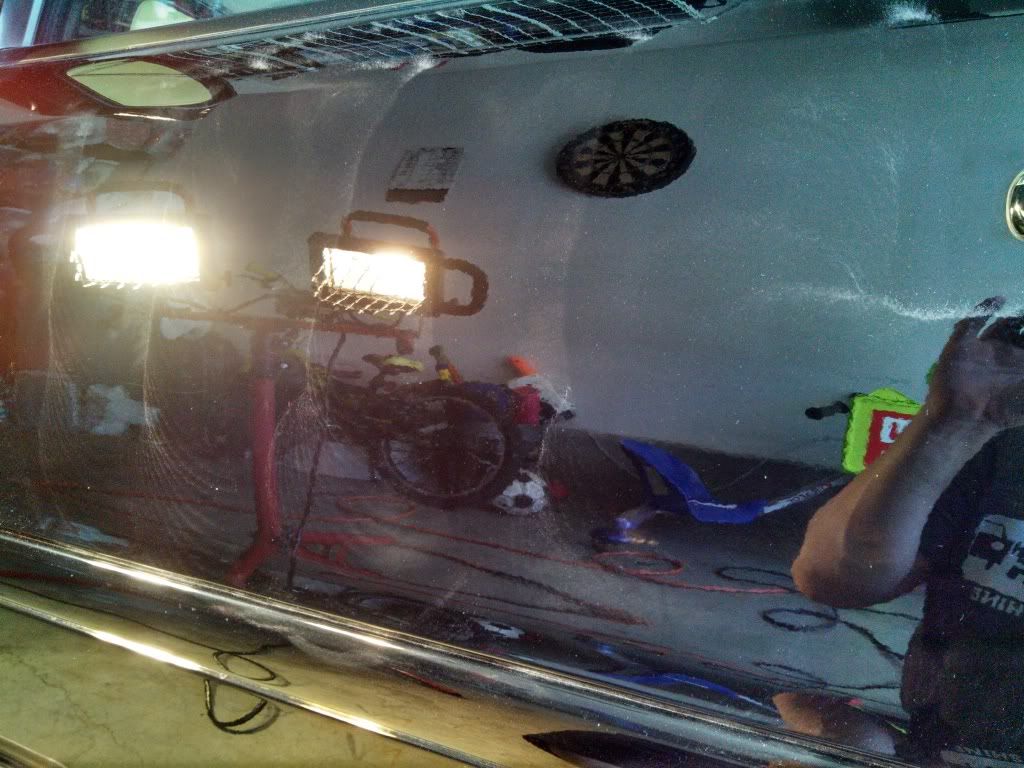Today I was using a DA with the microfiber pads.
D300 wasn't cutting it so I switched to M101.
Let me say the combo worked incredibly well. Took out scratches easily equal to 1500 grit and polished down to LSP ready. Not perfect but close. Could have finished with 205 for some super gloss and get some of those minute little scuffs but close enough or today. My own car by the way.
Point I'm getting to. I was outside and it was breezy. I noticed the D300 easily worked for a good 4-5 minutes and stayed very smooth. When switching to the M101 I got dusting on the second pass. Understandable due to it being windy and its just the nature of the product.
Still continued to work it while getting some dust and got good results.
But I wondered should I have stopped or kept going?
After a few more panels I thought since its windy the product is more prone to drying quicker. Makes sense.
So what evaporates quicker? Hot or cold liquids? Cold of course so I put the M101 in a little ice bucket to cool it down. Took a 10 minutes break, shook the bottle, primed the pad and added product. Again I was getting 5 minute working time t least with no dusting but this time with the M101!!! It finished better too.
Wow, how cool. Pun intended.
god idea? Don't know but it seemed to work.
Maybe this will help some one.
Final thoughts leading back to the title of this post.
What EXACTLY is dusting?
Is it ok to buff while its happening?
Was my solution a good one or the act of a moron that has no clue to what he's doing?
Any other things about dusting you could possibly add?
So that was my day but the paint sure is perty!
Finished of with the ultimate liquid on a finishing pad. Wow is that thin stuff. Had to keep checking if I was running dry but nope the pad was still moist and it was evident the wax was spreading but only by looking very very close. One X easily lasted 2-3 panels and i used about 4oz of product for the whole car.
Only bummer of the day is the threads of the S3BP backing plate stripped out and after tossing the microfiber pads in the washer the Velcro backing came off the foam. But otherwise an entertaining day.
D300 wasn't cutting it so I switched to M101.
Let me say the combo worked incredibly well. Took out scratches easily equal to 1500 grit and polished down to LSP ready. Not perfect but close. Could have finished with 205 for some super gloss and get some of those minute little scuffs but close enough or today. My own car by the way.
Point I'm getting to. I was outside and it was breezy. I noticed the D300 easily worked for a good 4-5 minutes and stayed very smooth. When switching to the M101 I got dusting on the second pass. Understandable due to it being windy and its just the nature of the product.
Still continued to work it while getting some dust and got good results.
But I wondered should I have stopped or kept going?
After a few more panels I thought since its windy the product is more prone to drying quicker. Makes sense.
So what evaporates quicker? Hot or cold liquids? Cold of course so I put the M101 in a little ice bucket to cool it down. Took a 10 minutes break, shook the bottle, primed the pad and added product. Again I was getting 5 minute working time t least with no dusting but this time with the M101!!! It finished better too.
Wow, how cool. Pun intended.
god idea? Don't know but it seemed to work.
Maybe this will help some one.
Final thoughts leading back to the title of this post.
What EXACTLY is dusting?
Is it ok to buff while its happening?
Was my solution a good one or the act of a moron that has no clue to what he's doing?
Any other things about dusting you could possibly add?
So that was my day but the paint sure is perty!
Finished of with the ultimate liquid on a finishing pad. Wow is that thin stuff. Had to keep checking if I was running dry but nope the pad was still moist and it was evident the wax was spreading but only by looking very very close. One X easily lasted 2-3 panels and i used about 4oz of product for the whole car.
Only bummer of the day is the threads of the S3BP backing plate stripped out and after tossing the microfiber pads in the washer the Velcro backing came off the foam. But otherwise an entertaining day.




Comment